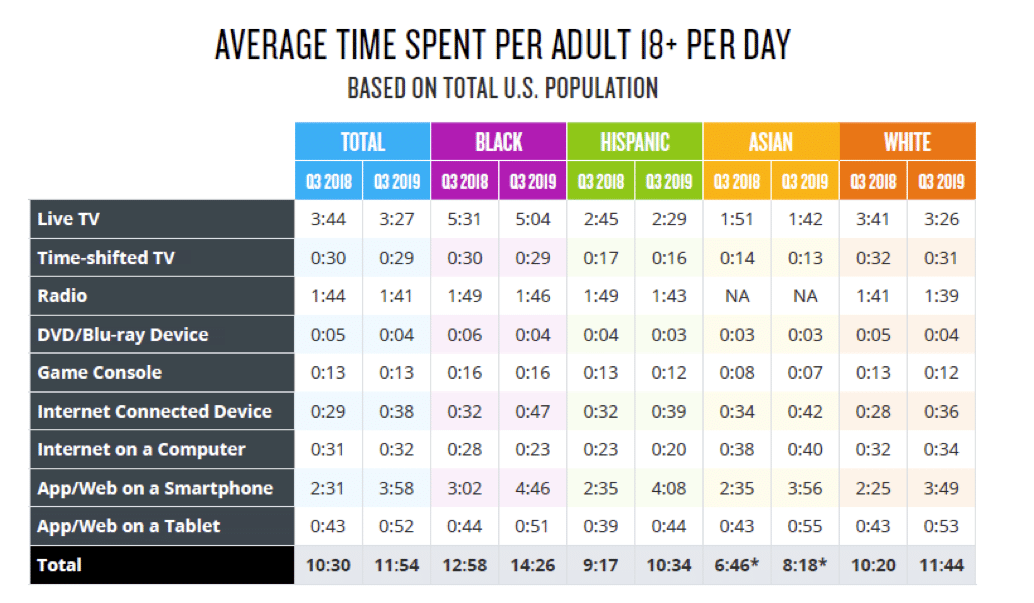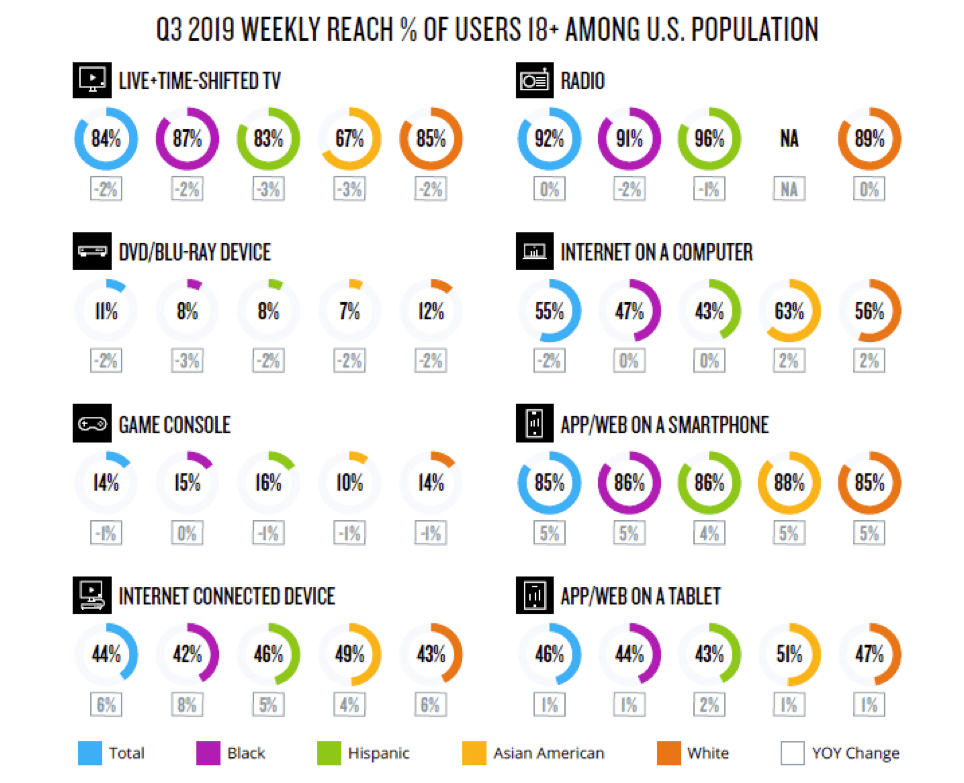Believe it or not, consumers are streaming even more content. The “Rona”—as it’s been deemed by Black Twitter—has forced many of us indoors for extended periods of time. And that means more time with our TVs and connected devices. We already know that nearly 19 percent of the time that consumers are spending on TV at home is through streaming, whether they are ad-supported models or paid subscription services. And those numbers could continue to increase as we are living a new normal given COVID-19 containment measures in the U.S.
In the last six weeks or so, however, many of us have really stepped up our “binge game” due to social distancing. I know I have. At Nielsen, we know that staying put in our homes can lead to an almost 60 percent increase in the amount of streaming content we watch. A big question for brands and communications pros is: What type of content is being watched? Consumers have gravitated to feature films, news and general-format programming. As the New York Times put it: more Netflix, less ESPN. In fact, my son had me watch a documentary on pandemics. The documentary? Not a great idea for calming anxiety. Spending time with my son? Awesome!
As we explore and analyze the impacts of current events on media consumption, we certainly can’t ignore the influence of multicultural consumers. According to our most recent Total Audience Report, Black adults continue to spend the most time overall with media at 14 hours and 26 minutes per day, which is 21 percent more time than the average adult. They spend more time than any other group with live TV at 5 hours and 4 minutes and smartphones at 4 hours and 46 minutes per day.

These connected devices are enabling and encouraging a shift from traditional to streaming, and as the connected TV becomes the new normal, so will streaming.
And content? This group dominates here as well. Check out some of the highly-popular streamed content examples:
- Jada Pinkett Smith’s Red Table Talk that is streamed and available only on Facebook Watch has been so popular that it has opened the door for similar programming with Gloria Estefan and multigenerational women for Latina storytelling, produced by Westbrook—the company Jada and Will Smith own.
- Netflix’s Strong Black Lead features conversations with key influential Black actors, directors, comedians, etc. available via podcast and Instagram.
- Roland Martin took his cable news show, News One Now, to a streaming format (Roland Martin Unfiltered) across social and digital platforms, and now has a devoted follower and viewership—with more than 100.7 million views and almost 435 million minutes viewed across YouTube, Facebook, Twitter and Instagram in just one year.
With growing consumption in Hispanic segments, we also see the proliferation of content by and about Hispanics:
- Netflix has the Con Todo channel on Instagram highlighting all thing #LatinXcellence. They also launched a podcast called Brown Love to highlight Latinx content and experiences.
- Pantaya, Lionsgate & Hemisphere Media’s Netflix-style streaming service recently launched. It targets the Latinx community and offers premium content, including original programming, to the Hispanic American market for $5.99 a month.
- Viacom’s free, ad-supported streaming service, Pluto TV, added a Latino category, featuring 11 linear Spanish and Portuguese-language channels, with content encapsulating movies, comedy, music, true crime, reality, sports and telenovelas.
There’s also been growing demand for more diverse Asian American content. Just look at the recent success of Asian-centric movies and shows such as the Oscar-winning Parasite, box-office smash, Crazy Rich Asians, and Netflix’s hit rom-coms, Always Be My Maybe and To All the Boys I’ve Loved Before. Asia is also Netflix’s fastest growing region, pointing to a future with more streaming content with Asian storylines.
We also know that daily internet-connected device usage among Asian American consumers increased from 2018 to 2019 by eight minutes per day; Hispanics by seven minutes; and African Americans by 15 minutes. Comms pros and content creators should take note of these evolving habits and tailor their offerings to reflect the shifts in usage.
It is important to note, that for reaching the masses, traditional linear TV and radio still present great opportunity. Radio reach has remained steady year-over-year and is the highest across all platforms at 92 percent, including 96 percent among Hispanic adults.

Whether you’ve increased your viewing or not during this global health crisis, now is a great time to turn a negative into a positive. Spend more time bonding with your loved ones—even if it’s over a discussion about whether or not you believe in Netflix’s “Love Is Blind” experiment.
For more information, check out our 2020 Total Audience Report and recent data that we’ve outlined in Staying Put: Consumers Forced Indoors During Crisis Spend More Time on Media.
Follow me on Twitter at @PowerfulPenny and on LinkedIn to stay in touch with me about the latest on diverse consumers and our impact in an ever-evolving digital world. Also, follow our Nielsen Community on Twitter at @NielsenKnows and on Facebook at @NielsenCommunity.








